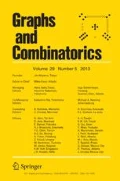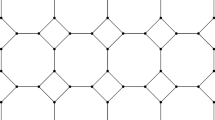Abstract.
Let n,p,k,q,l be positive integers with n=k+l+1. Let x1,x2, . . . ,x n be a sequence of positive integers with x1<x2<···<x n . A set {x1,x2, . . . ,x n } is called a set of type (p,k;q,l) if the set of differences {x2−x1,x3−x2, . . . ,x n −x n −1} equals {p, . . . ,p,q, . . . ,q} as a multiset, where p and q appear k and l times, respectively. Among other results, it is shown that for any p,k,q, there exists a finite interval I in the set of integers such that I is partitioned into sets of type (p,k;q,1).
Similar content being viewed by others
Author information
Authors and Affiliations
Corresponding author
Rights and permissions
About this article
Cite this article
Nakamigawa, T. One-dimensional Tilings Using Tiles with Two Gap Lengths. Graphs and Combinatorics 21, 97–105 (2005). https://doi.org/10.1007/s00373-004-0590-z
Received:
Accepted:
Issue Date:
DOI: https://doi.org/10.1007/s00373-004-0590-z




